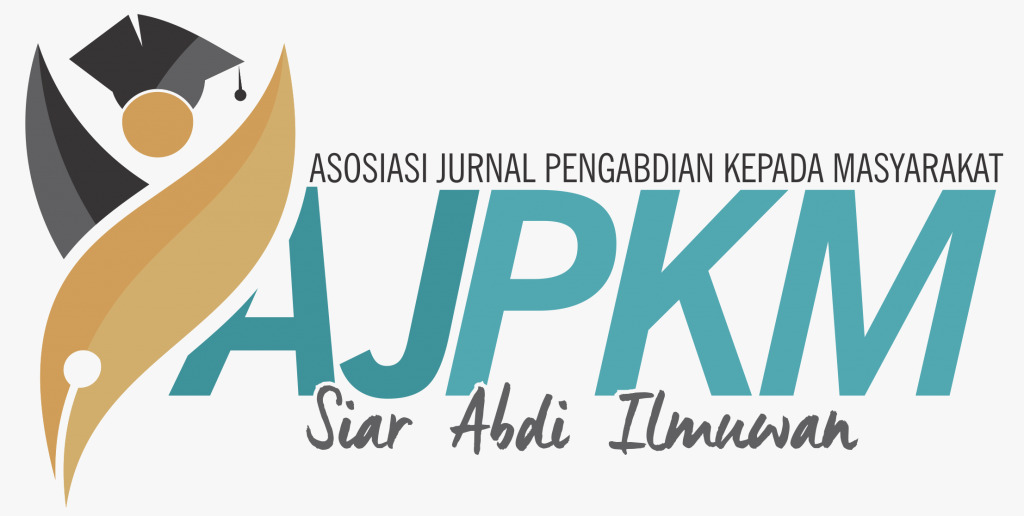LITERASI ASURANSI BAGI MASYARAKAT DESA MANGUN JAYA TAMBUN SELATAN
Abstrak
Public interest in insurance programs is still low. What is suspected to be the cause of the low level of public interest, especially the Indonesian people, towards this non-bank financial institution is the incomplete information obtained by the public about this institution in an effort to improve the quality of life in the future. Insurance is widely regarded as a consumer product for the upper class who have more funds and assets that they feel need to get more protection. In fact, insurance has other benefits and advantages for all circles of society at large. The problems highlighted by the OJK include unscrupulous agents who are classified as fraud on customer premium deposits, welcoming calls with closed questions, 'unitlink statements' which only cover insurance and administrative costs, and the absence of information on calculating premium returns in the event of contract cancellation at the time of policy. take place. The problems in the insurance industry started when financial inclusion was quite high, but literacy was still low. This means that financial products are in high demand by the public, but their understanding of these products is still low. Based on experience so far in both banks and insurance, knowledge of investment still needs to be improved. In helping OJK provide insurance literacy for the community, this Community Service has a mission to improve Insurance Literacy for the Community in Mangun Jaya Village, Kec. South Tambun. Training on Insurance Literacy will be held on March 27, 2022 for 2 hours. In accordance with the Covid-19 protocol, which limits the number of participants, the training can only be attended by 13 participants, most of whom are women. To be able to see whether the training provided was able to improve insurance literacy for participants, a test was carried out using a Paired Sample T-test, the test results showed that the training provided was able to increase understanding about Insurance for the Mangun Jaya community in South Tambun.
##plugins.generic.usageStats.downloads##
Referensi
Arijanto, A. (2010). Dosa-Dosa Orang Tua Terhadap Anak Dalam Hal Finansial. Elex media komputindo.
Dumouchel, L. (2010). Knowledge transfer and relationship building among students, the small business community, and the university. Proceedings of International Conference on Intellectual Capital, Knowledge Management & Organizational Learning. pp. 154-160
Everlin, S., & Dahlan, K. S. S. (2020). Faktor-Faktor Yang Memengaruhi Sikap Danminat Pembelian Milenial Terhadap Asuransi Jiwa. Jurnal RisetManajemen Dan Bisnis (JRMB) FakultasEkonomi UNIAT, 5(2), 41–60. http://jrmb.ejournal-feuniat.net/index.php/JRMB/article/view/363
Gay, L. R. (1991). Educational Evaluation and Measurement: Competencies for Analysis and Application (Second edi). Macmillan Publishing Company.
Huston, S. J. (2010). Measuring Financial Literacy. Journal of Consumer Affairs, 44(2), 296–316. https://doi.org/10.1111/j.1745-6606.2010.01170.x
Lin, C., Hsiao, Y. J., & Yeh, C. Y. (2017). Financial literacy, financial advisors, and information sources on demand for life insurance. Pacific Basin Finance Journal, 43(April), 218–237. https://doi.org/10.1016/j.pacfin.2017.04.002
McCormack, L., Bann, C., Uhrig, J., Berkman, N., & Rudd, R. (2009). Health insurance literacy of older adults. Journal of Consumer Affairs, 43(2), 223–248. https://doi.org/10.1111/j.1745-6606.2009.01138.x
Nidar, S. R., & Bestari, S. (2012). Personal Financial Literacy Among University Students (Case Study at Padjadjaran University Students, Bandung, Indonesia). World Journal of Social Sciences, 2(4), 162–171.
Putra, H. S. (2012). 19 Rahasia Tentang Uang, Kekayaan dan Kesejahteraan. Gramedia Pustaka Utama.
Sarigül, H. (2014). Muhasebe ve Finansman Dergisi A Survey of Financial Literacy Among University Students. The Journal of Accounting and Finance, 1(64), 207–224.
Wahyudi, Raymond, and Nanik Linawati. (2017). “Mencapai Financial Well-Being Melalui Peran Financial Literacy Bagi Masyarakat Indonesia.” Universitas Kristen Petra
Wijaya, R., Hartini, & Leon, F. M. (2019). Financial clusion and Financial Self-Efficacy in Indonesia. Advances in Economics, Business and Management Research, 100, 543–547. https://doi.org/10.2991/icoi-19.2019.95
Wijaya, R., Hartini, & Margaretha, F. (2022). The Role of Financial Inclusion in Improving Community Welfare: A Study on Cooperative Business. LePALISSHE. https://doi.org/10.4108/eai.3-8-2021.2315152
Yates, D. A., & Ward, C. (2009). Increasing student engagement through community organization partnerships. Business Education Innovation Journal, 1(2), 22–30.
##submission.copyrightStatement##
##submission.license.cc.by-sa4.footer##






















